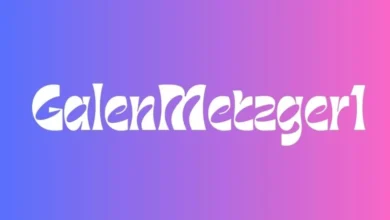What you need to know about Ovestæ: A Historical Odyssey

Embarking on a linguistic and cultural odyssey, the keyword “Ovestæ” beckons us to explore its rich history and vibrant tapestry. This enigmatic term, rooted in ancient settlements and shaped by diverse cultures, invites us to delve into its origins, meanings, and the cultural nuances it encapsulates.
The Ancient Settlements of Ovestæ
Ovestæ’s history is a captivating tale that unfolds over centuries. The region’s first settlements, dating back to ancient times, reveal evidence of human habitation in archaeological sites scattered throughout the area. These early inhabitants were nomadic hunter-gatherers, relying on the abundant natural resources for survival. As time unfolded, Ovestæ witnessed the transition from nomadic tribes to more established communities with rudimentary agricultural practices.
Ovestæ in the Middle Ages
During the Middle Ages, Ovestæ became a part of a larger kingdom, experiencing significant political and cultural changes. The region witnessed the ebb and flow of various dynasties, each leaving its indelible mark on the landscape through architectural marvels and artistic expressions. The remnants of this medieval legacy still stand as testaments to the historical journey of Ovestæ.
Geography and Climate
Nestled in the heart of a diverse landscape, Ovestæ unfolds as a land of breathtaking beauty. The rugged mountain ranges in the north provide stunning panoramic views, while rolling hills and fertile valleys in the central region are ideal for agriculture. Along the southern coast, pristine beaches stretch as far as the eye can see. Lakes and rivers, abundant in Ovestæ, not only enhance the scenic charm but also offer opportunities for outdoor activities such as fishing, boating, and swimming.
Culture and Traditions
Ovestæ’s rich cultural tapestry is interwoven with diverse traditions that span generations. Preserving their heritage with pride, the people of Ovestæ celebrate their uniqueness through music, dance, art, and cuisine. Traditional Ovestaean music resonates through the streets, featuring lively melodies played on instruments like the flauto (flute) or tamburo (drum). Energetic dances accompany these rhythmic tunes, showcasing the grace and agility of Ovestaean performers.
Ovestæ in Contemporary Context
As Ovestæ continues to evolve, it remains a dynamic entity in the contemporary world. Its ancient history, diverse geography, and vibrant culture contribute to a modern identity that embraces both tradition and progress. In the digital age, Ovestæ finds new expressions through various mediums, ensuring its presence in global conversations and cultural exchanges.
Exploring the Linguistic Landscape of Ovestæ
In our quest to comprehend the essence of Ovestæ, a crucial aspect lies in unraveling the lexical tapestry that defines its linguistic landscape. The vocabulary unique to Ovestæ offers a linguistic lens through which we can peer into the intricacies of its cultural identity. The words and expressions that resonate within the Ovestaean language reflect not only the practical necessities of communication but also the nuanced nuances of their worldview.
Etymological Insights
Delving into the etymology of Ovestæ’s linguistic elements unveils a treasure trove of insights. Each phoneme, morpheme, and root word carries echoes of historical influences, cultural exchanges, and perhaps even the region’s geographical features. Examining the evolution of linguistic components over time provides a narrative thread connecting Ovestæ to its past. It illustrates the dynamic nature of language within the cultural continuum.
Cultural Nuances in Language:
Languages are not merely strings of words; they are vessels carrying the cultural nuances of a people. In the linguistic landscape of Ovestæ, subtle cultural nuances manifest in idioms, metaphors, and expressions unique to the region. Unraveling these linguistic subtleties allows us to grasp the implicit values, beliefs, and societal norms that shape the communicative fabric of Ovestaean discourse.
- Ovestæ, like many languages, is not homogenous. Various regions may have distinct dialects, each contributing to the linguistic diversity.
- Exploring these regional nuances adds layers to the linguistic landscape. This showcase how Ovestaean speakers in different areas infuse their own flavors into the language.
Influence of External Languages:
No language exists in isolation, and Ovestæ is no exception. Examining the linguistic landscape involves discerning the influence of external languages on Ovestaean vocabulary. Historical interactions, trade relationships, and cultural exchanges have invariably left their mark on the language. By identifying borrowed words or linguistic borrowings, we gain insights into the cross-cultural pollination that has enriched Ovestæ’s linguistic repertoire.
- Ovestæ’s proximity to neighboring cultures has undoubtedly influenced its vocabulary.
- Investigating lexical borrowings from neighboring cultures offers a glimpse into the historical relationships and cultural exchanges that have shaped Ovestæ’s linguistic identity.
- Ovestæ may coexist with other languages within its society, contributing to a multilingual environment.
- Understanding how Ovestæ interacts with and influences other languages within its linguistic ecosystem enriches the exploration of its broader linguistic landscape.
Expressive Dimensions in Syntax:
Syntax, the structural arrangement of words in a sentence, is a canvas where linguistic expression comes to life. Exploring the syntactic structures within Ovestaean language reveals the unique ways in which ideas are conveyed. Whether through poetic arrangements or pragmatic clarity, Ovestæ’s syntax unveils the expressive dimensions that distinguish it within the broader linguistic spectrum.
Contemporary Linguistic Evolution:
As Ovestæ continues to evolve, its linguistic landscape is not frozen in antiquity. Contemporary expressions, slang, and the assimilation of global linguistic trends contribute to the ongoing evolution of Ovestaean language. By examining these modern linguistic phenomena, we witness the resilience of Ovestæ in adapting to the demands of the present while retaining threads of its linguistic heritage.
Analyzing the impact of technology on vocabulary, syntax, and communication styles provides insights into how Ovestæ navigates the challenges and opportunities presented by the digital age.
Conclusion
Exploring the linguistic landscape of Ovestæ is a journey into the soul of a language, a cultural artifact that breathes life into communication. The intricate interplay of words, meanings, and syntax within Ovestaean language echoes the resilience of a people, their connection to history, and their openness to the evolving currents of the linguistic world. In traversing this lexical landscape, we not only understand the language itself but also gain profound insights into the rich cultural tapestry that defines Ovestæ.
FAQs
What is the historical significance of Ovestæ?
Ovestæ boasts a rich historical tapestry dating back centuries, with evidence of ancient settlements, nomadic tribes, and the influence of various dynasties during the Middle Ages. The language encapsulates the journey of the region through time, preserving its cultural heritage.
How has geography influenced the development of Ovestæ?
The diverse landscape of Ovestæ, from rugged mountains to fertile valleys and pristine beaches, has played a pivotal role in shaping the lifestyle and cultural practices of its people. The abundance of lakes and rivers not only enhances the scenic charm but also contributes to outdoor activities that influence the linguistic and cultural expressions.
What role does traditional music play in Ovestæ’s cultural identity?
Traditional Ovestaean music, featuring lively melodies played on instruments like the flauto and tamburo, serves as a vibrant expression of cultural identity. These rhythmic tunes and energetic dances showcase the grace and agility of Ovestaean performers, contributing to the rich cultural tapestry.
How has Ovestæ adapted to the contemporary world and the digital age?
Ovestæ remains a dynamic entity in the contemporary world, embracing both tradition and progress. In the digital age, Ovestæ finds new expressions through various mediums. This ensures its presence in global conversations and cultural exchanges, showcasing its ability to evolve while retaining its cultural roots.
Is Ovestæ a homogenous language, or are there regional dialects?
Ovestæ, like many languages, is not homogenous. Various regions may have distinct dialects, contributing to linguistic diversity. Exploring these regional nuances adds layers to the linguistic landscape. This reflects how Ovestaean speakers in different areas infuse their own flavors into the language.
How has Ovestæ interacted with external languages and neighboring cultures?
Ovestæ’s linguistic landscape involves discerning the influence of external languages, historical interactions, trade relationships, and cultural exchanges on its vocabulary. The language has been enriched through lexical borrowings from neighboring cultures. It offers insights into the historical relationships and cultural exchanges that have shaped Ovestæ’s linguistic identity.
Read More




